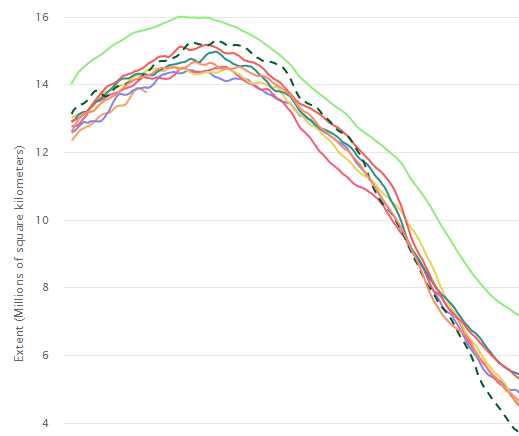Warmer than normal conditions, abnormal wide areas of open water, large wildfires burning near Arctic Ocean shores, and Arctic sea ice extents at 4th lowest on record. That’s the present reality of a human-warmed Arctic environment.
(An assessment of present Arctic conditions)
With Arctic temperatures hovering around 1.6 degrees Celsius above average and focusing on a rather hot zone near Central Siberia, Arctic sea ice on the Siberian side is experiencing widespread melt ponding. In addition, a large area of open water is expanding through the Laptev Sea due to warm southerly winds and much warmer than normal temperatures.
Overall, temperatures in this Central Siberian zone will range as high as 25 degrees Celsius (45 F) above average today. With some areas hitting has high as 85-90 (F). Near these much warmer than normal temperatures, a series of large wildfires are burning. Fires so far north are historically rare. But they have become more common as the Earth has warmed due to fossil fuel burning.
(Arctic temperatures are well above average for this time of year. These much warmer than normal temperatures are contributing to a number of impacts, including lower than normal sea ice extent.)
Present sea ice decline rates now put Arctic Ocean ice extent at 4th lowest on record. And the present trajectory for Arctic sea ice appears to be aiming toward approximately 4 million square kilometers come melt season end. However, with human-forced warming now resulting in ever-increasing global temperatures, downside risks remain. Particularly with so much heat moving about in the Arctic.
















